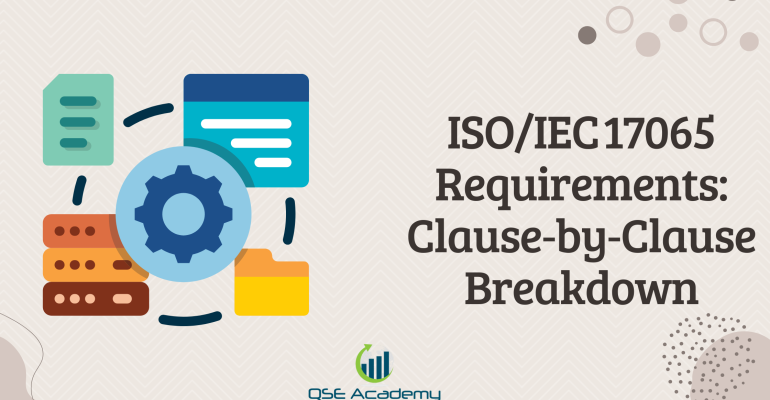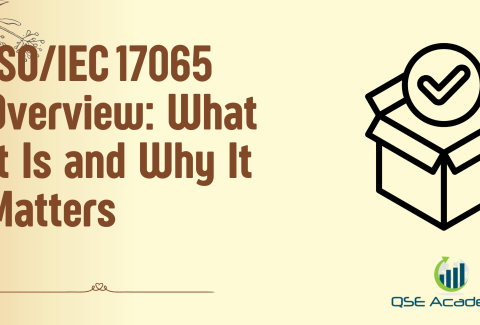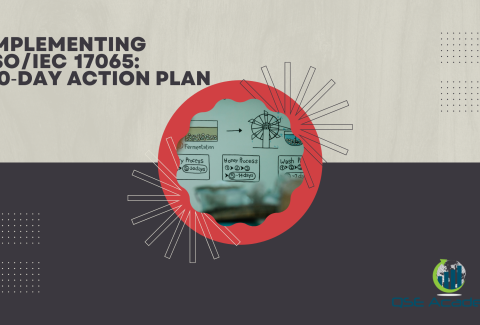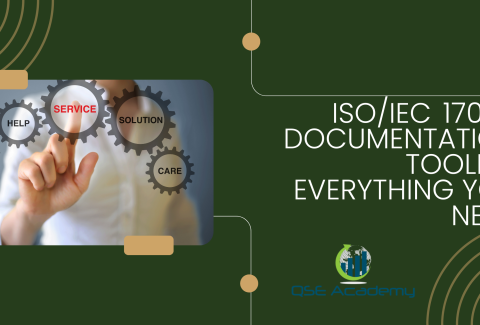ISO/IEC 17065 Requirements: Clause‑by‑Clause Breakdown
A Clear Roadmap Through ISO/IEC 17065
When I first started supporting a rapidly expanding certification body, I noticed a pattern that changed how I teach ISO/IEC 17065. Their technical team knew their audits inside out—but they struggled to connect the clauses as a unified system. Once they understood how each clause influences the others, their accreditation results turned around completely.
That’s exactly what this pillar article is designed to give you: a structured, clause-by-clause explanation of ISO/IEC 17065 that’s practical, direct, and easy to apply.
You’ll see how impartiality, structure, competence, process control, and management systems fit together to form a credible, impartial certification body.
Clause 1–3 Overview – Scope, Normative References, Terms & Definitions
Clause 1: Scope
Clause 1 defines the boundary of ISO/IEC 17065. It tells you exactly what the standard covers: the requirements a certification body must meet when certifying products, processes, or services.
This clause matters because it sets the foundation for which activities fall under accreditation.
Pro Tip: Use Clause 1 during planning and scoping to confirm whether a product category or conformity assessment scheme truly aligns with the standard.
Clause 2: Normative References
Clause 2 points to key documents necessary for understanding ISO/IEC 17065.
These references aren’t optional—they form the backbone of accurate interpretation.
Ignoring updates to normative documents is a common mistake.
Staying current avoids inconsistencies in terminology and expectations.
Clause 3: Terms & Definitions
Clause 3 ensures everyone uses the same vocabulary.
Terms like evaluation, certification, impartiality, competence, and complaint have specific meanings in the standard.
Misinterpreting these words leads to risk, especially in impartiality and decision-making.
Clear definitions protect your certification process from misunderstanding.
 Clause 4 – General Requirements: Impartiality & Liability
Clause 4 – General Requirements: Impartiality & Liability
Clause 4 is all about integrity. It explains how a certification body must remain impartial and how it must demonstrate accountability through liability and financial stability.
Key expectations:
- Identify and manage risks to impartiality
- Maintain independence from commercial, financial, or organizational pressures
- Have liability coverage proportional to certification risks
- Approve and monitor impartiality controls
Pro Tip: Maintain an impartiality-risk register and review it regularly with an impartiality committee.
Common Mistake: Believing declarations alone prove impartiality. They don’t—ongoing monitoring is essential.
Clause 5 – Structural Requirements: Building a Compliant CB
Clause 5 defines what your organization must look like structurally.
It ensures your legal identity, governance, decision-making authority, and organizational structure are transparent and free from conflicts.
Key expectations:
- A clear legal entity with documented governance
- Defined roles and responsibilities
- Separation between evaluation, review, and decision
- Independence from activities that threaten impartiality
Pro Tip: Keep an updated organizational chart showing reporting lines and impartiality safeguards.
Common Mistake: Allowing one person to oversee both sales and certification decisions.
Clause 6 – Resource Requirements: Competence, Infrastructure, and Control
Clause 6 covers everything related to people, competence, and infrastructure.
You must demonstrate:
- Competent personnel (auditors, reviewers, decision-makers)
- Evidence-based competence matrices
- Documented approval of subcontractors and technical experts
- Adequate facilities, IT systems, and security
- Ongoing competence maintenance
- Confidentiality and impartiality agreements
Pro Tip: Re-evaluate competence annually or whenever scope expands.
Common Mistake: Treating competence as a one-time qualification instead of a maintained capability.
Clause 7 – Process Requirements: Certification Steps Explained
Clause 7 is the largest clause—and the one that auditors scrutinize the most.
It defines how certification bodies must manage each step of the certification cycle.
7.1–7.3 Application & Contract Review
You must review applications for feasibility, competence alignment, and impartiality risks before accepting a client.
7.4 Evaluation
Evaluation includes audits, testing, or inspections.
Evidence must be traceable and linked directly to the certified product or process.
7.5 Review
A technical review checks completeness and accuracy of evaluation results.
7.6 Decision
Certification decisions must be made by people not involved in evaluation.
This is one of the most critical impartiality safeguards.
7.7 Certification Documentation
Certificates must be controlled, traceable, and compliant with format requirements.
7.9–7.10 Surveillance
Certification must be monitored through periodic surveillance activities.
7.11–7.12 Changes, Reductions, and Withdrawals
The CB must evaluate changes, reduce scope when needed, or withdraw certificates when compliance is no longer met.
7.13–7.15 Records, Complaints & Appeals
All activities must be documented, and complaint/appeal processes must be transparent and consistent.
Pro Tip: Use a centralized process-flow map to show how each step links together.
Common Mistake: Fragmented documentation that hides traceability.
Clause 8 – Management System Requirements: Option A & Option B
Clause 8 ensures your certification body operates consistently and continuously improves.
You can choose:
- Option A: Build your own management-system framework covering documentation, records, internal audits, management review, and corrective actions
- Option B: Use an ISO 9001-certified quality management system as your foundation
Both are acceptable as long as they meet Clause 8 outcomes.
Key expectations under both options:
- Document control
- Records management
- Internal audits
- Management reviews
- Corrective actions
- Continual improvement
Pro Tip: Create a cross-reference matrix that shows how each Clause 8 requirement is met—especially if you use Option B.
Common Mistake: Treating management reviews as box-ticking instead of performance evaluation.
Practical Implementation Roadmap – Bringing All Clauses Together
A strong implementation roadmap connects all clauses, not just individual requirements.
Here’s a practical approach:
- Map processes from application to withdrawal
- Align competence (Clause 6) with evaluation (Clause 7)
- Build impartiality controls (Clause 4) into boundary decisions (Clause 5)
- Use internal audits (Clause 8) as the engine of improvement
- Document everything with clear traceability
This keeps your system coherent and ready for assessment.
Common Non-Conformities Across Clauses
Most CBs struggle with:
- Clause 4: Weak impartiality-risk analysis
- Clause 5: Blurred authority lines
- Clause 6: Missing competence evidence
- Clause 7: Poor evaluation traceability
- Clause 8: Weak internal audit conclusions
Knowing these saves time and prevents repeat failures.
FAQs – Clause-by-Clause Clarifications
Q1: Can a CB comply partially with ISO/IEC 17065?
No. The clauses are interconnected. Missing one weakens all others.
Q2: Do external experts need full competence evaluation?
Yes. External resources must meet the same requirements as internal staff.
Q3: Is surveillance mandatory?
Yes. It ensures ongoing conformity throughout the certification cycle.
Conclusion – Mastering Clause-by-Clause Requirements
ISO/IEC 17065 is not a collection of isolated clauses—it’s a fully integrated system.
Understanding how each clause contributes to impartiality, competence, and consistency is the difference between a compliant certification body and a credible one.
If you want to strengthen your implementation, now is the right moment to take action.
→ Download the complete ISO/IEC 17065 Clause-by-Clause Checklist
or
→ Book a structured review session to assess your implementation against each clause.
Melissa Lavaro is a seasoned ISO consultant and an enthusiastic advocate for quality management standards. With a rich experience in conducting audits and providing consultancy services, Melissa specializes in helping organizations implement and adapt to ISO standards. Her passion for quality management is evident in her hands-on approach and deep understanding of the regulatory frameworks. Melissa’s expertise and energetic commitment make her a sought-after consultant, dedicated to elevating organizational compliance and performance through practical, insightful guidance.









